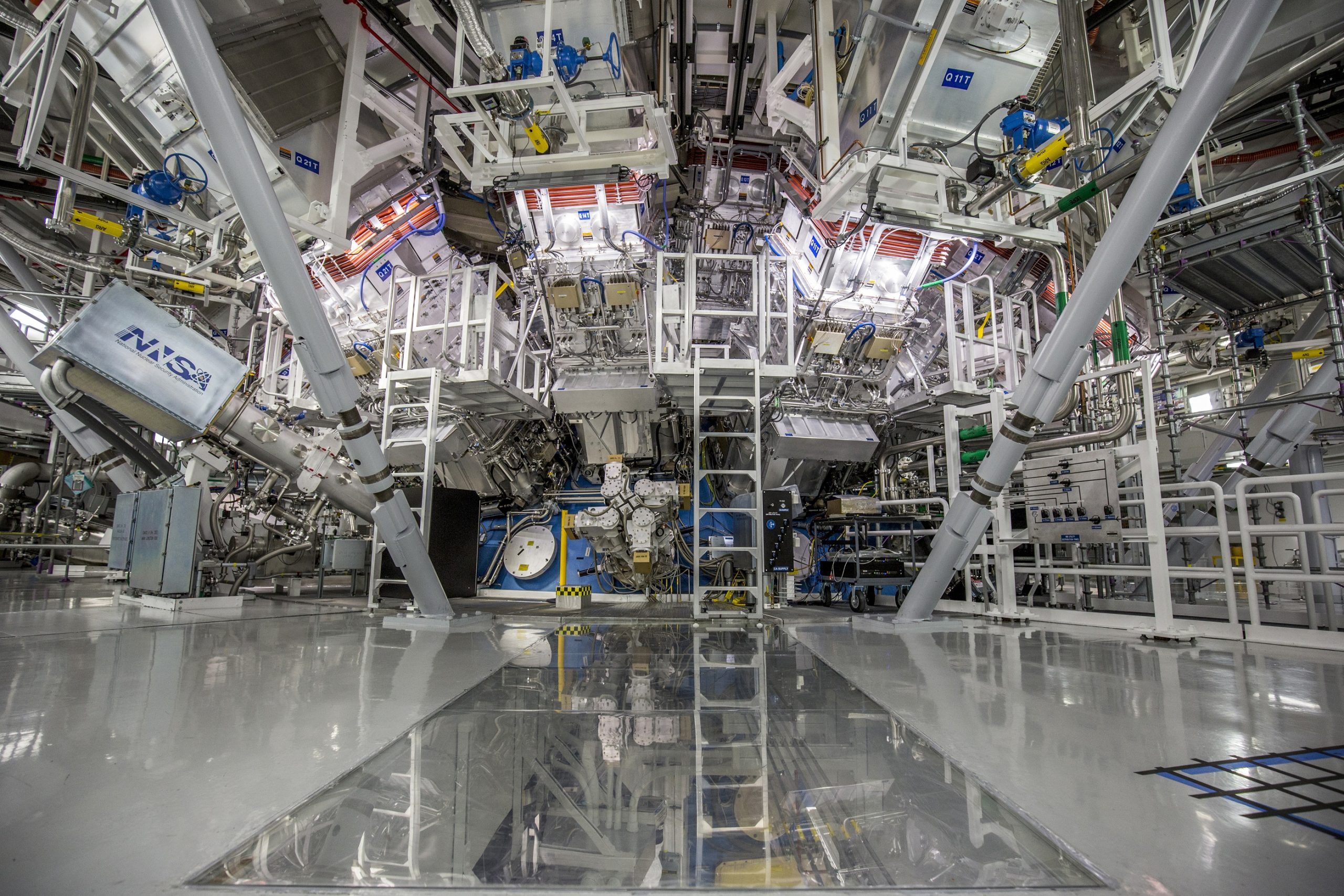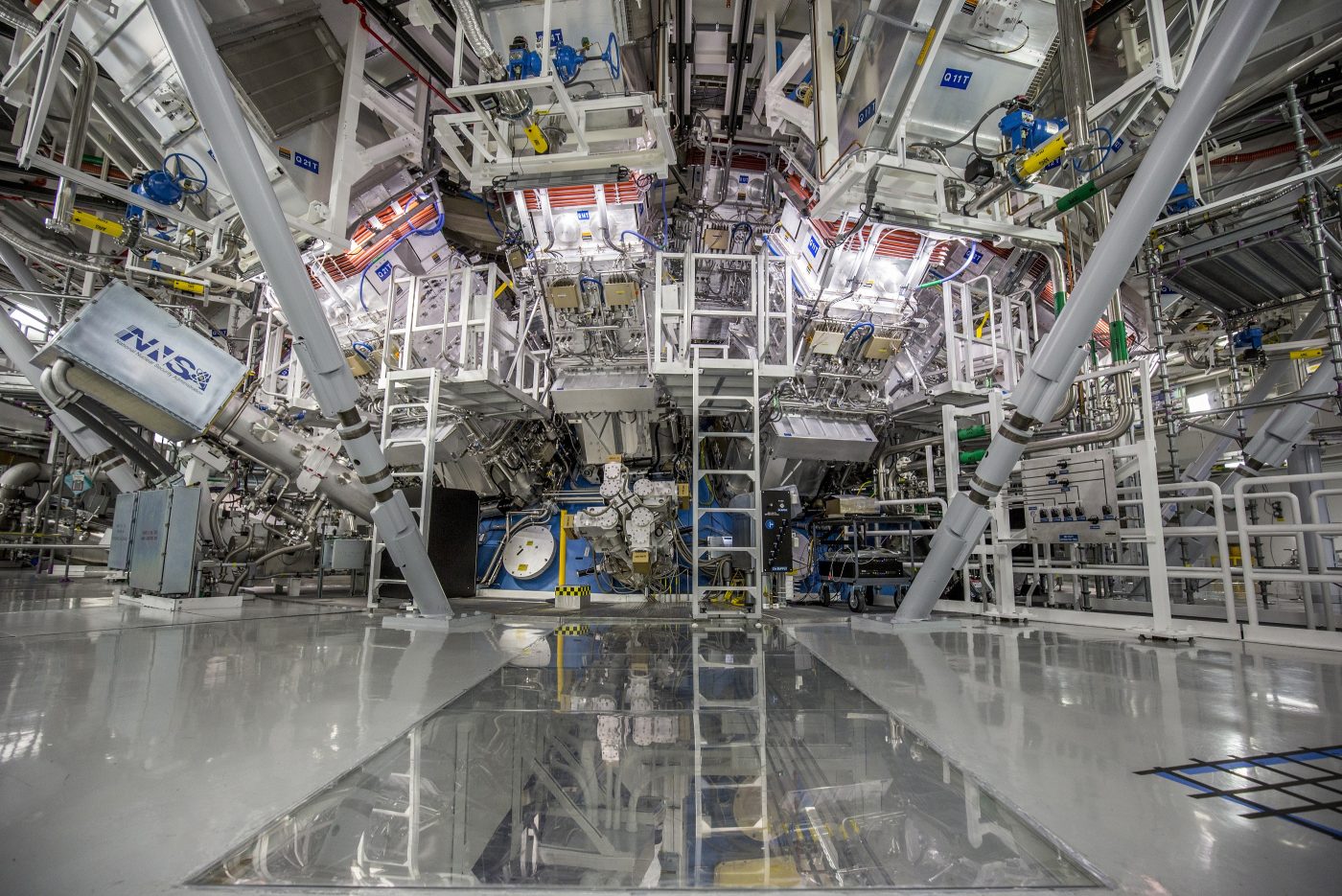On Dec. 13, 2022, the U.S. Department of Energy (DOE) and DOE’s National Nuclear Security Administration announced the achievement of fusion ignition at Lawrence Livermore National Laboratory (LLNL)—a major scientific breakthrough decades in the making that will pave the way for advancements in national defense and the future of clean power. On Dec. 5, a team at LLNL’s National Ignition Facility (NIF) conducted the first controlled fusion experiment in history to reach this milestone, also known as scientific energy breakeven, meaning it produced more energy from fusion than the laser energy used to drive it.
The Nevada National Security Site (NNSS)’s Livermore Operations (LO) has been supporting activities at NIF since the early 2000s through diagnostic characterizations, development, and deployment. LO’s mission is to support national defense by developing and maintaining the capabilities of diagnostic instrumentation and sensors used in energy measurement experiments and the maintenance of the U.S. nuclear deterrent. LO currently has eight active laboratories supporting diagnostic characterizations for instruments that are deployed to take measurements in NIF experiments. Characterizations are performed on very complex instrumentation, as well as relatively simple components like optical filters, which are incorporated into larger diagnostic systems. These characterizations ensure the data returned from NIF is accurate and reliable. During its time supporting NIF, LO has deployed as many as 18 field diagnostics technicians to NIF’s Target Area.
“What [NIF is] doing is creating fusion within a chamber, but without the diagnostics, nobody can see what’s going on in the chamber,” said NNSS engineer Morris Kaufman. “These special tricks and diagnostics help us see and understand what’s happening inside.”
Some of these specialized devices include VISAR, which measures shock velocities, breakout times, and emissions; a neutron imaging lens, which creates images of the neutrons created in the fusion process; and the Gamma Reaction History diagnostic, which measures nuclear bang time and burn width.
LLNL’s successful experiment delivered 2.05 megajoules (MJ) of energy to a target to create 3.15 MJ of fusion energy output, demonstrating for the first time a most fundamental science basis for inertial fusion energy (IFE). Although there are still some scientific and technological developments required to achieve simple, affordable IFE, DOE is currently restarting a broad-based, coordinated IFE program in the United States—a program which could someday provide power to every U.S. home. By providing the diagnostics necessary to capture and interpret the data created throughout NIF’s experimentation, NNSS is proud to help create that path forward.


